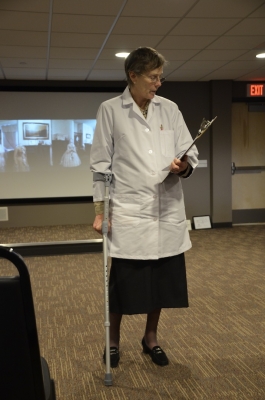
Florence Seibert, in full Florence Barbara Seibert, American scientist, best known for her contributions to the tuberculin test and to safety measures for intravenous drug therapy.
Seibert contracted polio at age three, but became an outstanding student, graduating at the top of her high-school class and winning a scholarship to Goucher College, Towson, Maryland, from which she graduated in 1918.
While working for the Phipps Institute, Seibert traveled widely, working with such institutions as the University of Uppsala in Sweden. In the mid-1930s her work culminated with her development of the purified protein derivative, or PPD, that would become the basis for what is today known as the Standard TB Test.
Tuberculosis is a relatively rare bacterial infection that primarily affects the lungs. It can infect and become dormant for months or years, but once detected, it is treatable with a course of antibiotics over several months. Active TB is highly contagious, however and affects less than one percent of the U.S. population. About 500 people die from tuberculosis every year in the U.S.
Seibert’s breakthrough procedure was readily accepted by the medical community. In 1938 she was awarded the Trudeau Medal from the National Tuberculosis Association for this work. Her TB test became standard in the United States in 1941, and a year later, was adopted by the World Health Organization as well. That year, the American Chemical Society awarded her the Garvan Medal.
Picture Credit : Google



